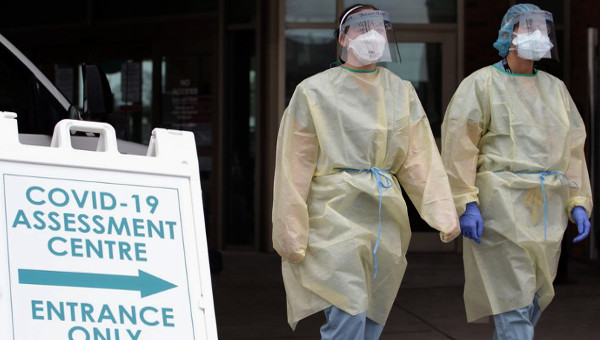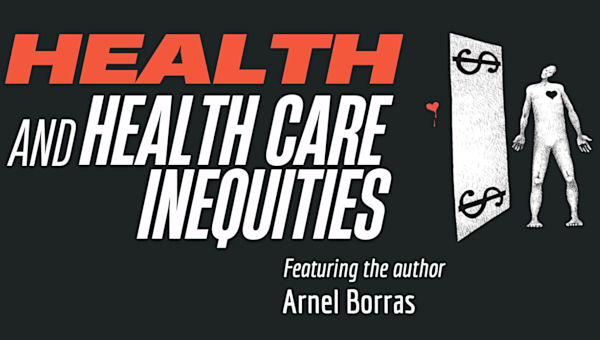‘In What World?’ PPE, Healthcare Workers and the Ontario State
In what world is a court order needed to require employers to provide front-line healthcare workers with the personal protective equipment (PPE) that they, in their professional judgment, relying on best practices and government directives, determine is needed to perform their jobs safely? Welcome to Ontario where on April 22, in the midst of the COVID-19 pandemic, Mr. Justice Morgan issued just such an order.

Why did unionized nurses at four long-term care facilities require such an order? To begin with, the dangers they face at work are palpable. Long-term care (LTC) facilities have been a hotbed of infection and a major source of fatalities in Ontario. In the facilities where these nurses are employed, scores of residents had contracted COVID-19 and dozens have died from their infection, and nurses have been infected, and at least one of whom needed to be hospitalized. The numbers are changing daily.
The chief medical officer of health for Ontario recognized the need for urgent action and issued a series of Directives to address the crisis. One of these, Directive No. 5, issued and updated on April 10, included a requirement that healthcare workers must perform an assessment of every patient before every patient or resident interaction. Moreover, “if a healthcare worker determines … based on their professional and clinical judgment, that health and safety measures may be required in the delivery of care … then the [facility] must provide that healthcare worker with access to the appropriate health and safety control measures, including an N95 respirator” [my emphasis].
Shortage of Supplies
Yet, notwithstanding this clear directive, these long-term care facilities were refusing to provide the needed PPE. Why? Because there is an insufficient supply in the province. Therefore, the government and the employers argued, the directive should be read down (left to the side). Nurses should only be provided with such protective equipment as is reasonably practicable for the facilities to provide, taking into account the shortage and the need to conserve scarce resources. In effect, they argued, because it is not reasonably practical to follow best practices, healthcare workers must accept an elevated risk that they and the people they care for will become ill and possibly die.
Shocking as it may sound, this approach to health and safety is deeply entrenched in the law. The Occupational Health and Safety Act, which was also raised by the union in its application, requires that employers “take every precaution reasonable in the circumstances for the protection of a worker” [my emphasis]. This qualification of the level of safety that must be provided goes back to Ontario’s first Factory Act in 1884 and has been with us ever since.
But how do we determine what level of safety is “reasonable in the circumstances?” In most cases, the circumstances are not naturally given, but rather are determined by decisions taken by governments and employers about what to produce and how. And more often than not, these decisions are made for profit-seeking or budgetary reasons. For example, employers routinely use chemicals that are hazardous to workers’ health. Yet we do not say that these chemicals can only be used if no worker is to be exposed or harmed. Rather, we set exposure limits that put workers’ lives and health at risk because it would not be reasonable in the circumstances to require more.
So too in this crisis. Why is there a shortage of essential medical supplies? This is not a natural state of affairs but the result of conscious decision-making by the government not to keep stocks of equipment on hand, but to rely on just-in-time delivery through extended supply chains that reach back to distant countries where wages are low. And it is the result of private operators making profit maximizing decisions about their supplies as well.
Safety First
So the government and the employers must have felt confident that reasonable practicability would excuse the imposition of additional risks on healthcare workers and the public. For once they were wrong. While Justice Morgan did not address the government’s responsibility for the lack of supply, he firmly rejected private economic concerns as a basis for accepting the imposition of risk.

He also roundly dismissed the government and the employers’ shameful argument, made by lawyers from the safety of their private offices (for the protection of everyone involved, the case was argued by video-conference), that these workers were being selfish in claiming they should be given protective gear; that they were putting their private interest above that of the public.
Perhaps we are reaching a turning point, when we are no longer prepared to deny workers access to the equipment they need in order to do their jobs safely. The two days after the court order, the Ontario Labour Relations Board issued an order directed at three LTC facilities, two of which were also subject to the court’s order, that they provide proper protective gear to all employees and that health and safety inspectors conduct in-person inspections weekly for the next two months.
Of course, these judgments and order do not resolve the supply shortage. Only the government can do that. But while it is prepared to accept that workers and patients will unnecessarily be made sick and that some will die, it is not prepared to exercise its’ emergency powers to compel local companies to produce these desperately needed resources. I suppose, they might argue, it is not reasonably practical. •
This article first published on the Toronto Star website.





